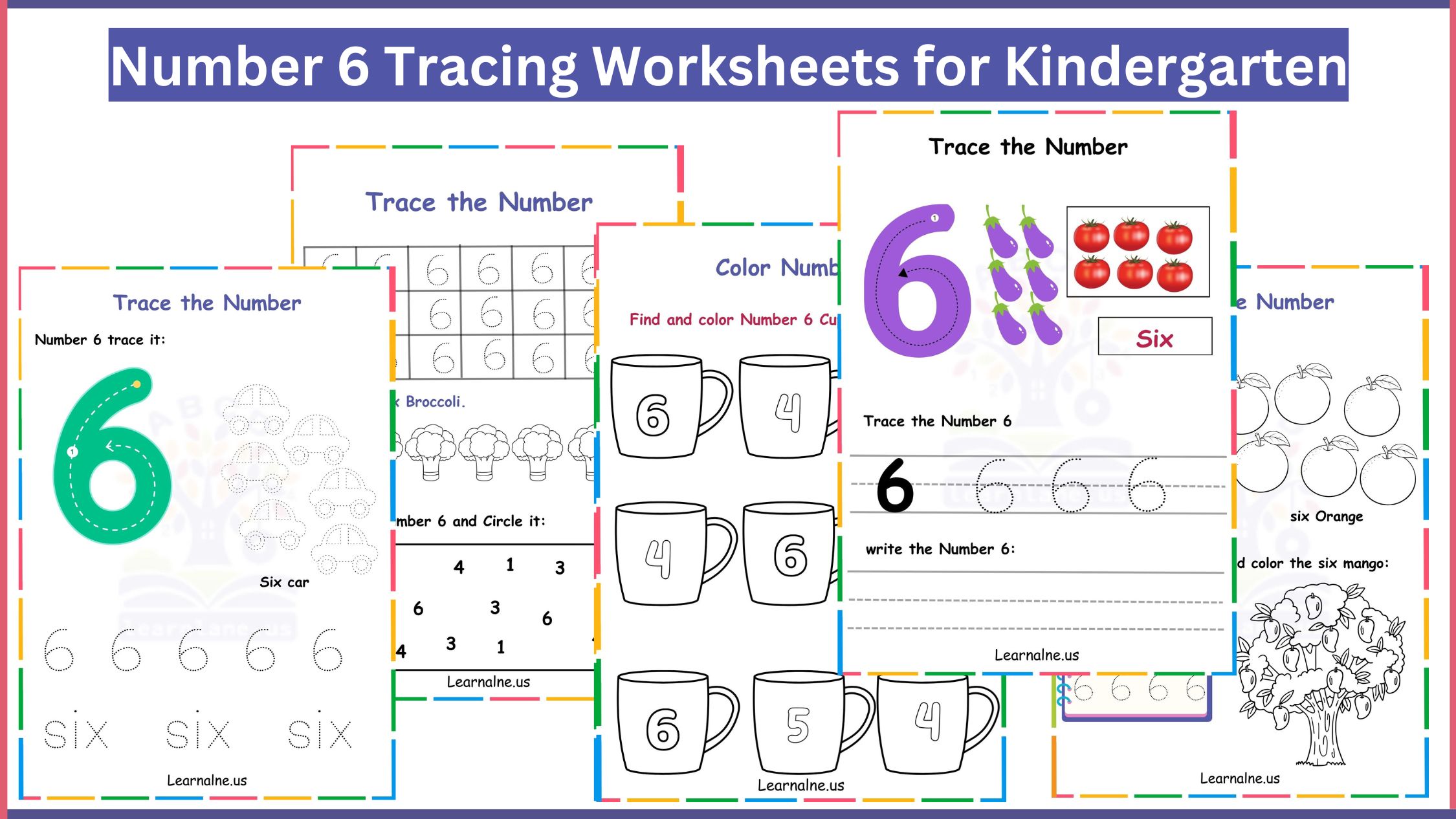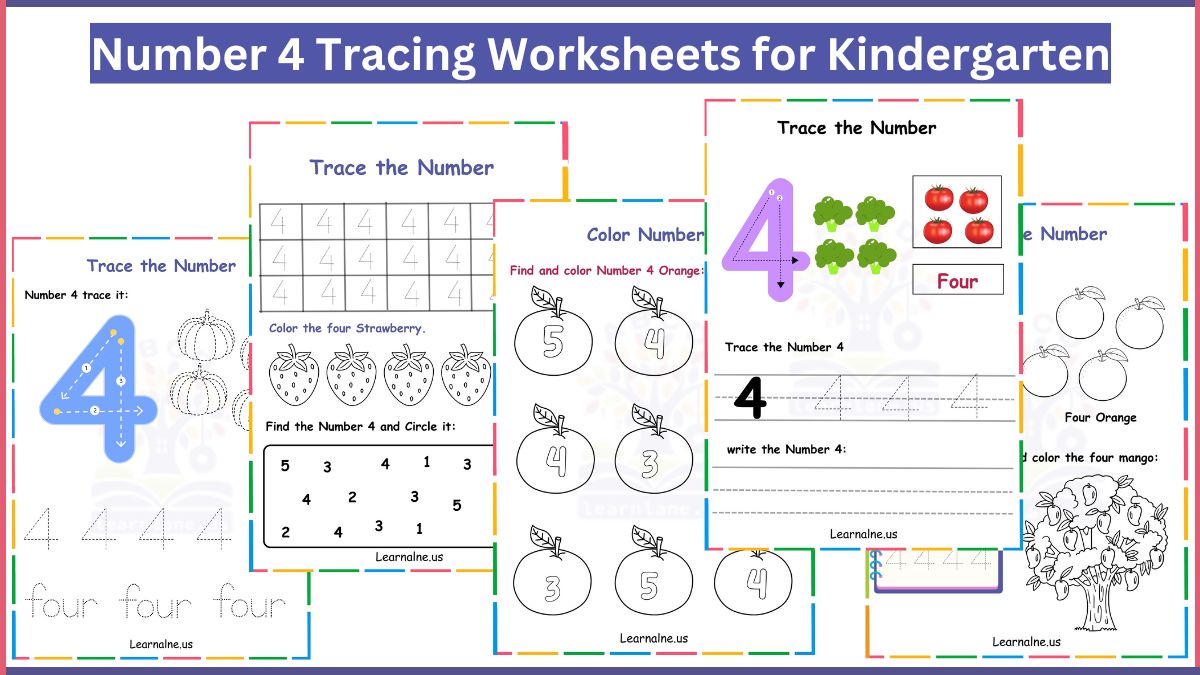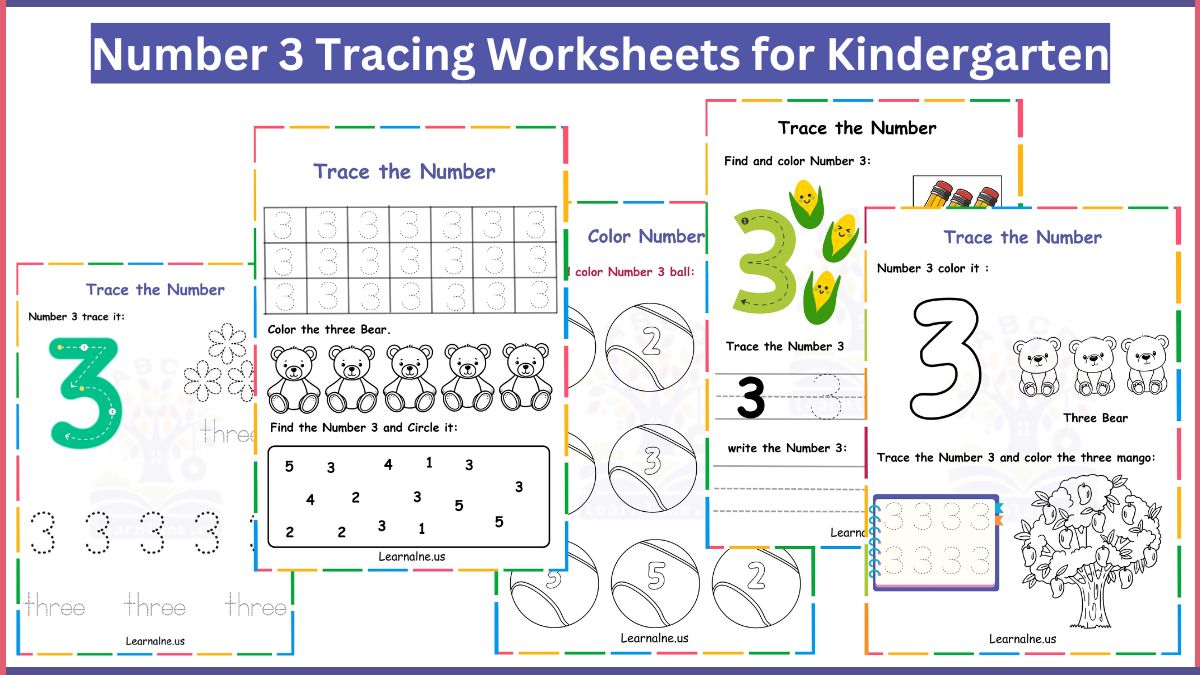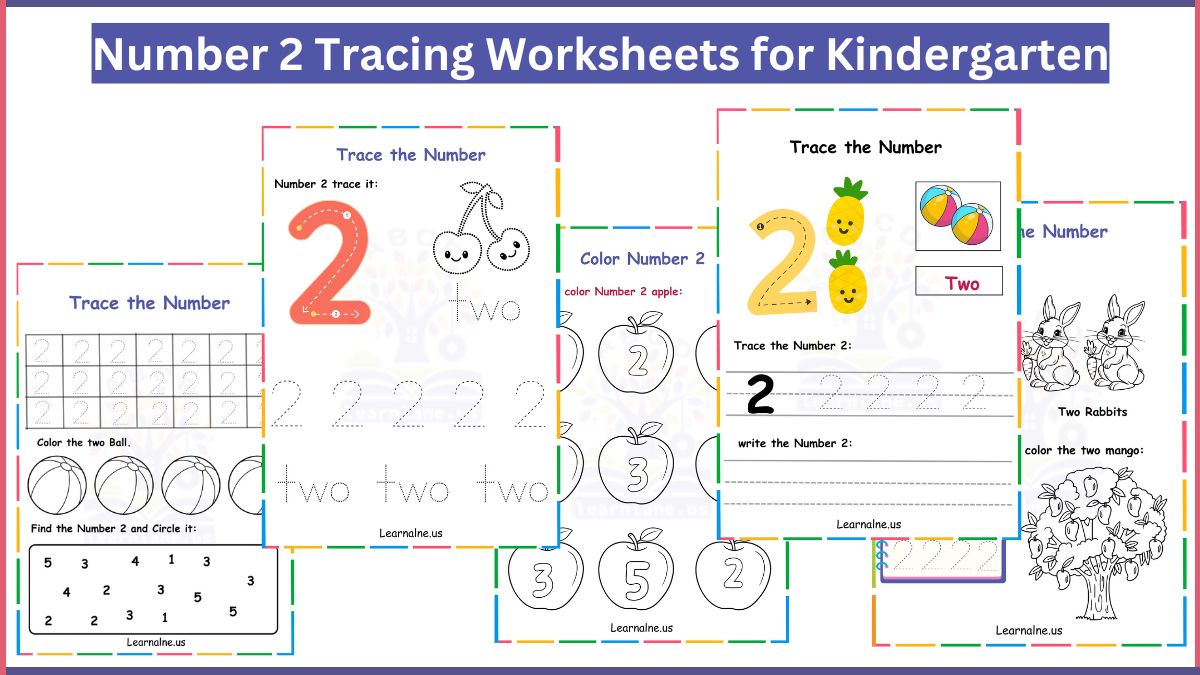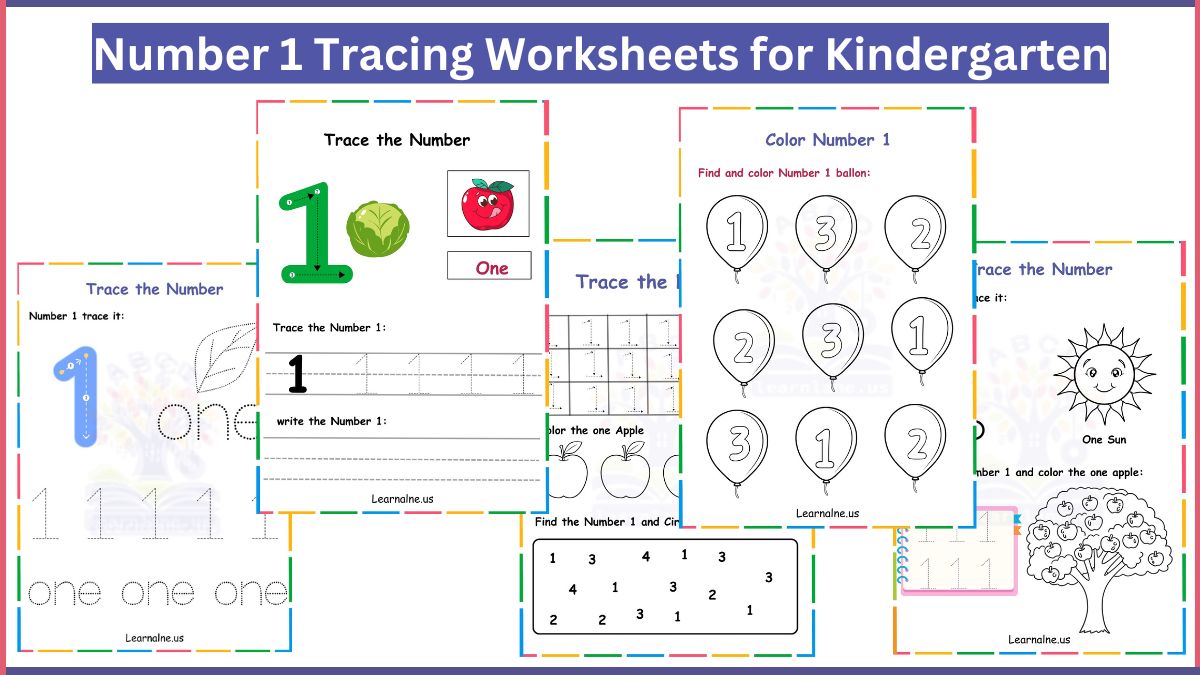Free preschool tracing worksheets offer young learners hands-on practice with shape recognition and pencil control. Square tracing worksheets for preschoolers help children ages 3–5 improve fine motor skills using clean, simple layouts with dotted squares. Printable square worksheets support pre-writing development without digital distractions, PDFs, or login barriers. Each worksheet includes 4 to 6 squares (2–3 inches), clearly labeled with “Trace Square” prompts. Parents and teachers can print them or recreate them by hand for no-prep learning at home or in the classroom.
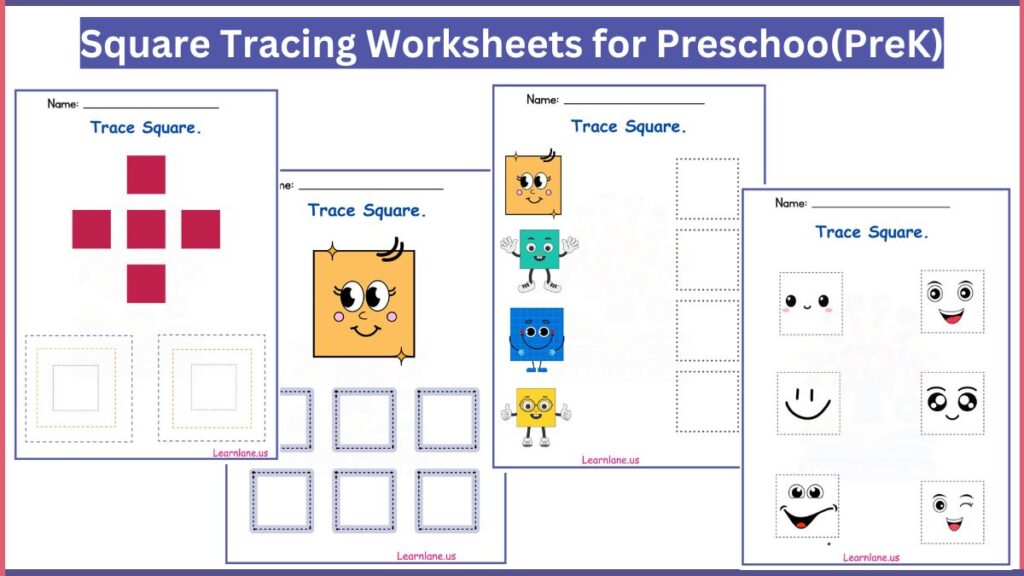
Each worksheet contains 4 to 6 squares, sized between 2 to 3 inches. The layout is clean and repeatable—ideal for early learners. A common format is 2 rows of 3 dotted squares, spaced to prevent overlap. You can draw this yourself or print the ready-to-use versions. These preschool shape worksheets printable are optimized for quick, focused practice.
Square Tracing Worksheets for Preschoolers
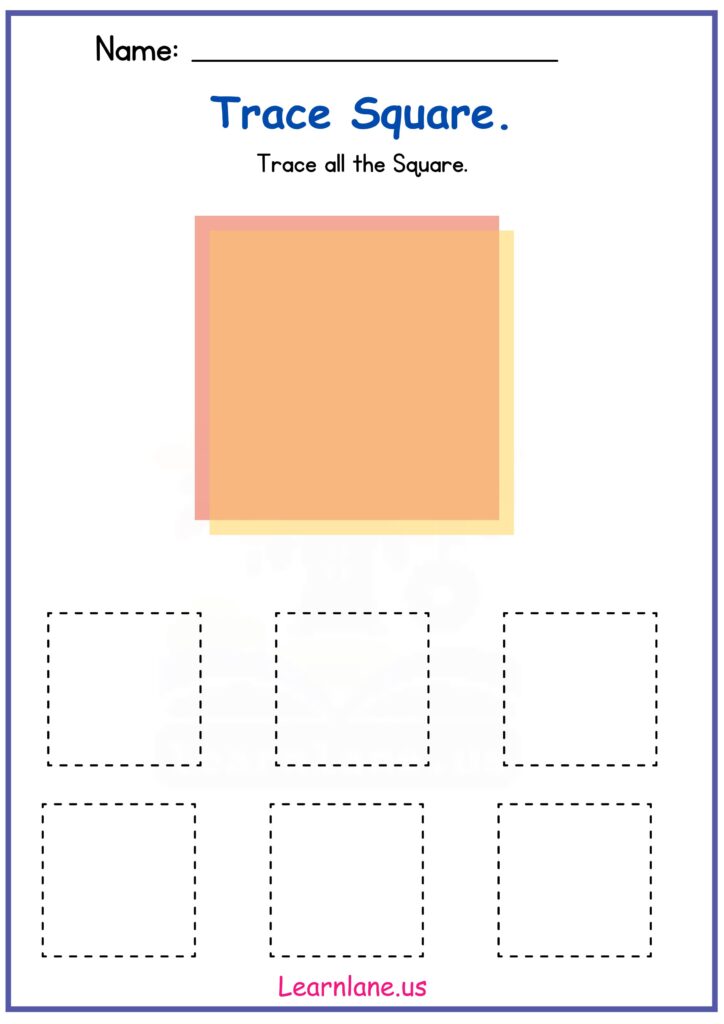
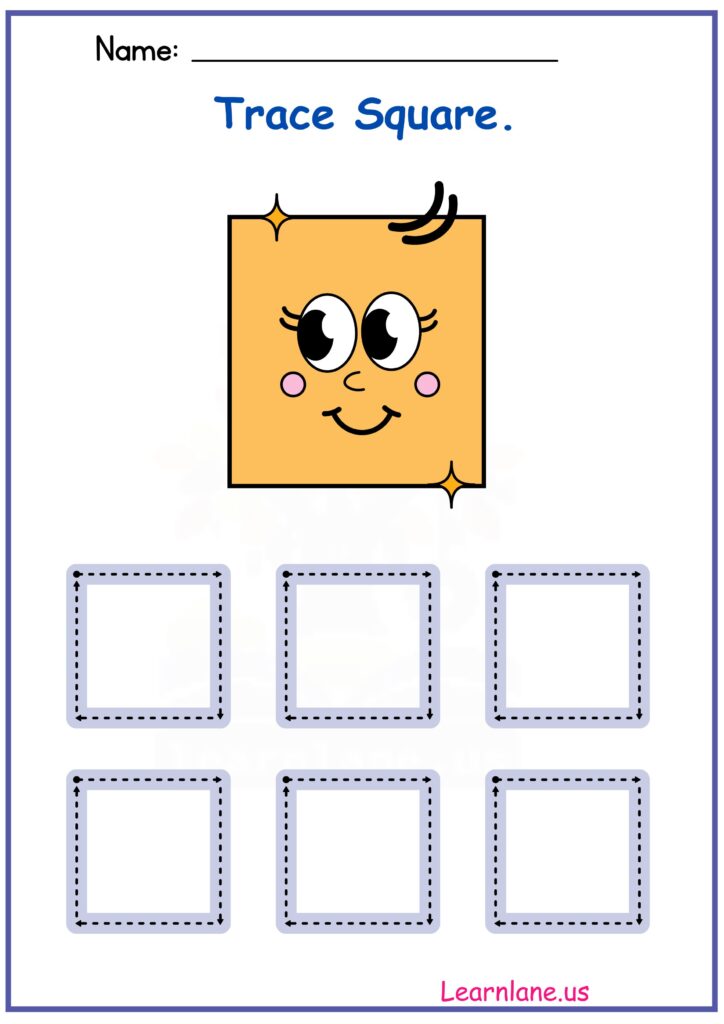
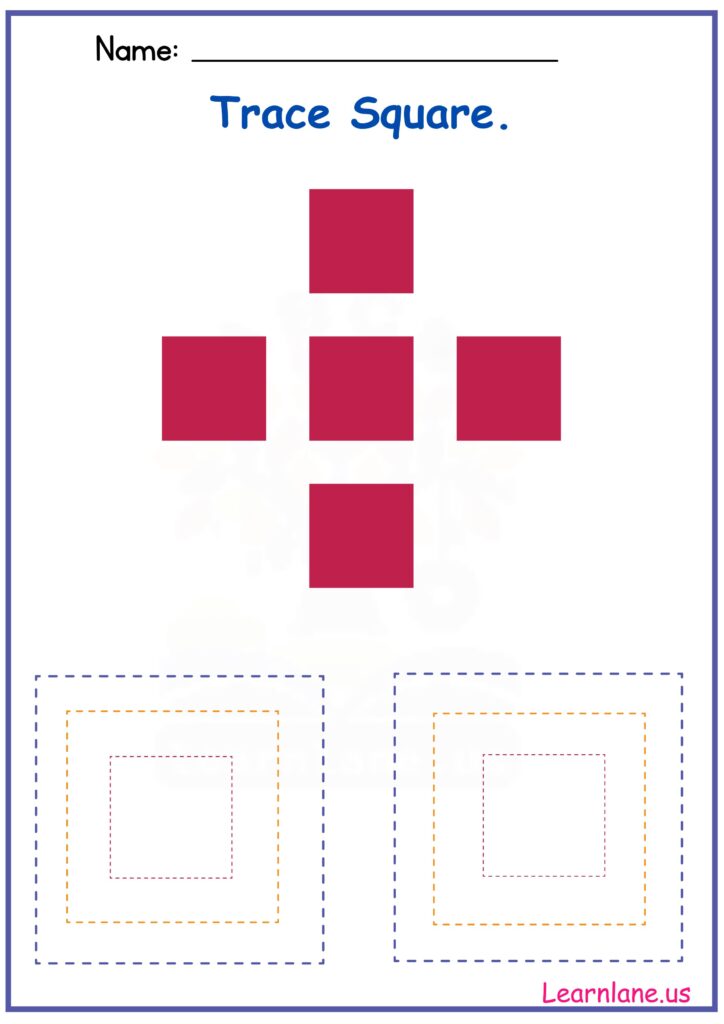

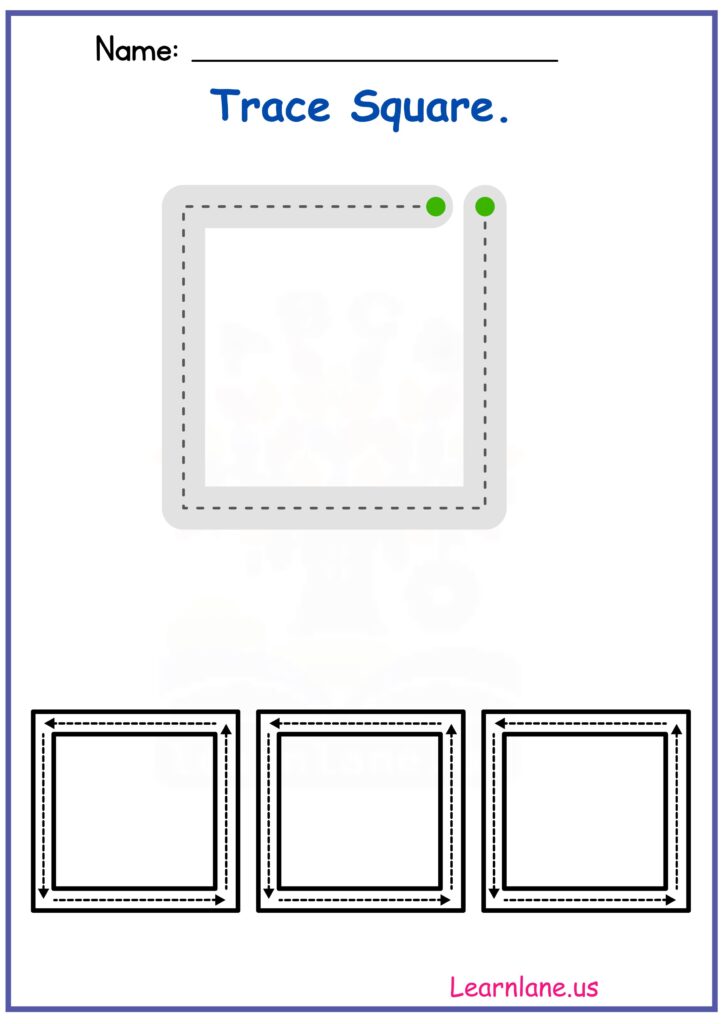
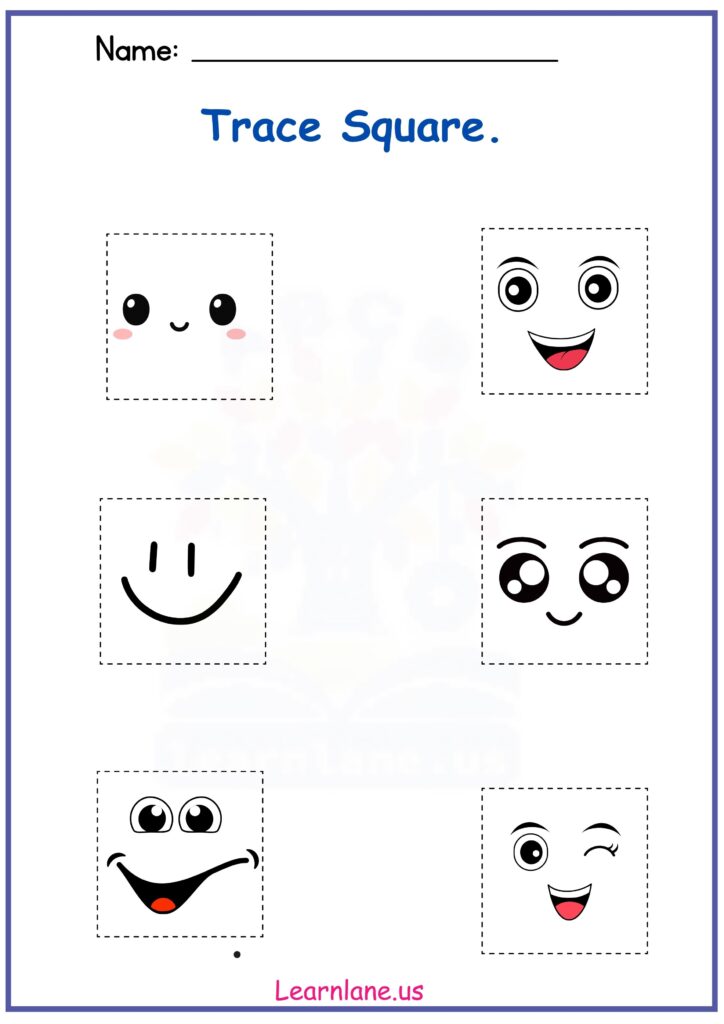
How Can Parents Use Square Tracing at Home?
Use the worksheets during quiet time or as part of a learning routine. Start with 5-minute tracing sessions, especially for 3-year-olds just learning grip control. After tracing, ask the child to color the squares for added creativity. You can also draw your own: six 2-inch squares on a blank page labeled “Trace the Squares.” (Keywords: free printable tracing worksheets for preschool)
How Can Teachers Use These in the Classroom?
Set up square tracing as a fine motor center. Laminate the sheets for reuse with dry-erase markers. Use group prompts like “Trace 4 squares, then count them.” You can also use a 2×2 grid of squares and number them to integrate counting. These worksheets are easy to manage and require no prep. (Keyword: preschool classroom tracing activities)
How Does Square Tracing Build Skills?
Tracing squares helps build wrist control, grip strength, and spatial alignment. The straight edges teach kids to change direction—essential for letter formation. (Keyword: square tracing for fine motor skills)
Squares appear in everyday life—windows, tiles, books. Tracing helps kids name and identify the shape while reinforcing the idea of four equal sides. (Keyword: preschool shape recognition activities)
How Do You Teach Kids to Trace Squares?
Start with finger tracing to show direction. Then guide them with a thick crayon. Use clear instructions: “Start at the top corner and go around.” Avoid long sessions. Praise their effort, not just accuracy.
Can You Use These Worksheets for Counting or Sensory Play?
Yes. Number each square (1 to 4) and ask kids to count aloud as they trace. For sensory learning, place a worksheet under a tray of flour or rice. Kids can finger-trace each shape for a tactile experience.
What are free printable square tracing worksheets for preschoolers?
These square tracing worksheets for preschoolers feature 4–6 dotted squares (2–3 inches) with “Trace Square” prompts for ages 3–5. They build fine motor skills and shape recognition.
How can I use preschool tracing worksheets at home?
Trace 4–6 squares in a 5-minute session during playtime. Draw 6 dotted 2-inch squares for a DIY version. These free preschool tracing worksheets need no prep. Print or use lamination for reuse.
How does square tracing improve fine motor skills?
Tracing squares builds hand strength and precise movements for writing readiness. It improves coordination for kids ages 3–5. Regular practice with square tracing for fine motor skills boosts pencil control.
How does tracing teach shape recognition?
Tracing squares helps kids spot them in objects like windows or tiles. These preschool shape recognition activities reinforce shape naming. Worksheets with 4–6 squares make learning intuitive.
How can I make square tracing fun for kids?
Use bright crayons or add stickers after tracing. Turn it into a game (e.g., “race to trace 3 squares”). These square tracing activities for kids keep non-themed worksheets engaging.

